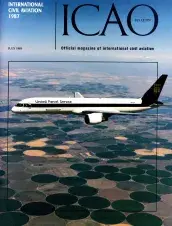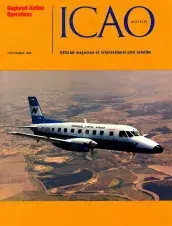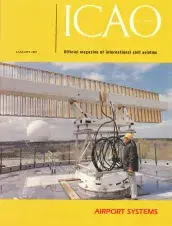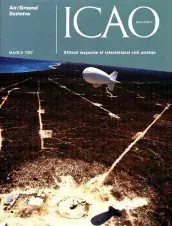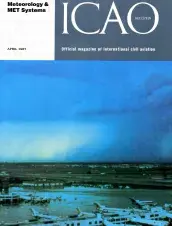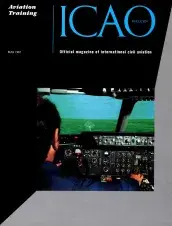ICAO Journal
The objective of the Journal is to provide a concise account of the activities of the International Civil Aviation Organization and to feature additional information of interest to Contracting States and the international aeronautical world.
 (ICAO Journal is available in English only from 2013)
(ICAO Journal is available in English only from 2013)
This is the first Southern Border (SOWRBALL) aerostat to be employed in Arizona, near the U.S.-Mexico border. It will provide look-down radar coverage of the mountainous/desert region from an altitude of some 15,000 feet. This newly designed aerostat is 71 metres long and has an inverted Y-shaped tail structure.
Launch customer for the first Boeing 757 Package Freighter was United Parcel Service, which received an initial two out of a total order for 16 last September. The B-757PF accommodates 15 standard containers on the main deck (187 m 3) plus another 52 m 3 of bulk-loaded cargo in the lower holds. Here, one of the aircraft is shown before delivery overflying irrigated farmland of Washington State.
This Meteotel image as shown by an air traffic control display is an infra-red satellite view of France on which atmospheric pressures are superimposed (in red) at specific areas. Meteotel images and atmospheric pressure values constitute network dynamic data and therefore are updated automatically as new information is received by the system.
This is an artist's concept of a typical future installation of the new Terminal Doppler Weather Radar. The TDWR, under development by Raytheon for the U.S. Department of Transportation, will be used in part for the early detection of wind shear in terminal approach control areas. It is a part of the 20-year ATC improvement programme for the U.S. National Airspace System.
The 18-seat, all passenger EMB-110PZ Bandeirante is shown carrying the colours of Nordeste Linhas Aéreas Regionais S.A., one of five regional airlines in Brazil performing scheduled operations. Nordeste is a joint venture of Transbrazil, Banco da Bahia and Votec Taxi Aéreo, established to serve the northeast part of the country.
Final phase – flight testing — of a multi-blade propfan, under development in a 3-year U.S. programme, is expected later this year. Shown is the prototype undergoing static tests in Southern California last year. The goal is to produce a more fuel-efficient propulsion system for commercial aircraft. The programme, called Propfan Test Assessment (PTA), is directed by the U.S. National Aeronautics and Space Administration.
Tethered at up to 3,000 metres above their ground- or sea-based mooring pads, aerostats located along the southeastern United States provide unmanned platforms for coastal and sea surveillance, particularly directed against illicit drug trafficking. LASS, a Low Altitude Surveillance System, with its L-band radar can detect and track low flying aircraft (60-m altitude) to a range of over 240 km.
Here we see a classical microburst in association with heavy rain, immediately northeast of Denver's Stapleton International Airport in Colorado (U.S.A.). The horizontal outflow is seen only to the left side of the downdraught; the outflow is sufficiently strong to produce a horizontal roll vortex, identified in the photograph as a bulge in the outflow cloud.
High light-point brightness is a key feature of this 200° field-of-view Aircraft Wide Angle Reflective Display System (AWARDS) developed by Singer Link-Miles in England. It meets today's requirement for advanced visual simulation by providing a continuous, undistorted, cross-cockpit display for the flight crew.

